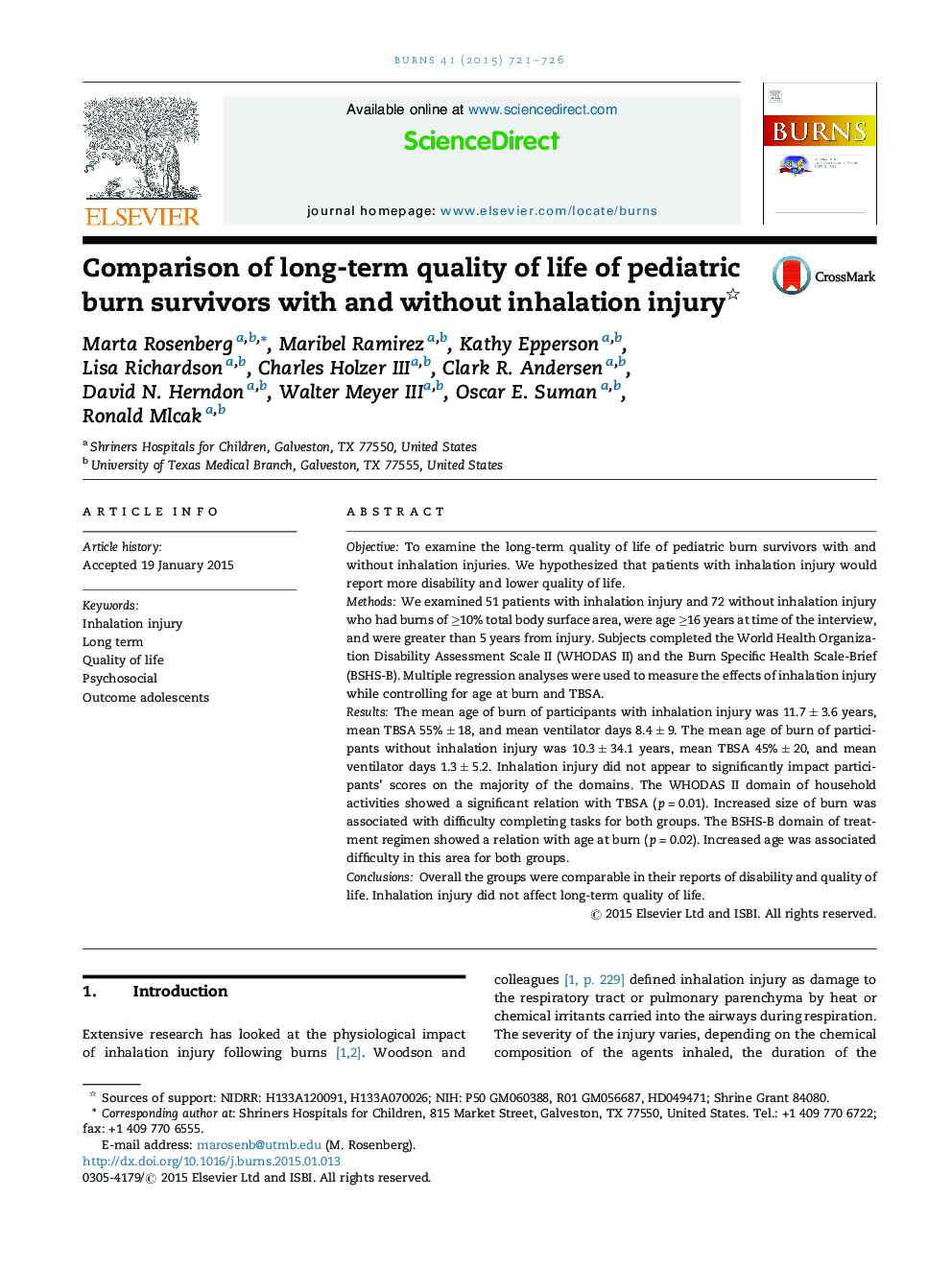| کد مقاله | کد نشریه | سال انتشار | مقاله انگلیسی | نسخه تمام متن |
|---|---|---|---|---|
| 3104288 | 1191648 | 2015 | 6 صفحه PDF | دانلود رایگان |
• Examine long-term quality of life of patients with and without inhalation injury.
• Patients were ≥16 years when interviewed and greater than 5 years after burn.
• Inhalation injury did not significantly impact long term outcome.
• Size of burn and age of burn showed differences between the groups on some domains.
• Overall the groups were comparable in reports of disability and quality of life.
ObjectiveTo examine the long-term quality of life of pediatric burn survivors with and without inhalation injuries. We hypothesized that patients with inhalation injury would report more disability and lower quality of life.MethodsWe examined 51 patients with inhalation injury and 72 without inhalation injury who had burns of ≥10% total body surface area, were age ≥16 years at time of the interview, and were greater than 5 years from injury. Subjects completed the World Health Organization Disability Assessment Scale II (WHODAS II) and the Burn Specific Health Scale-Brief (BSHS-B). Multiple regression analyses were used to measure the effects of inhalation injury while controlling for age at burn and TBSA.ResultsThe mean age of burn of participants with inhalation injury was 11.7 ± 3.6 years, mean TBSA 55% ± 18, and mean ventilator days 8.4 ± 9. The mean age of burn of participants without inhalation injury was 10.3 ± 34.1 years, mean TBSA 45% ± 20, and mean ventilator days 1.3 ± 5.2. Inhalation injury did not appear to significantly impact participants’ scores on the majority of the domains. The WHODAS II domain of household activities showed a significant relation with TBSA (p = 0.01). Increased size of burn was associated with difficulty completing tasks for both groups. The BSHS-B domain of treatment regimen showed a relation with age at burn (p = 0.02). Increased age was associated difficulty in this area for both groups.ConclusionsOverall the groups were comparable in their reports of disability and quality of life. Inhalation injury did not affect long-term quality of life.
Journal: Burns - Volume 41, Issue 4, June 2015, Pages 721–726
